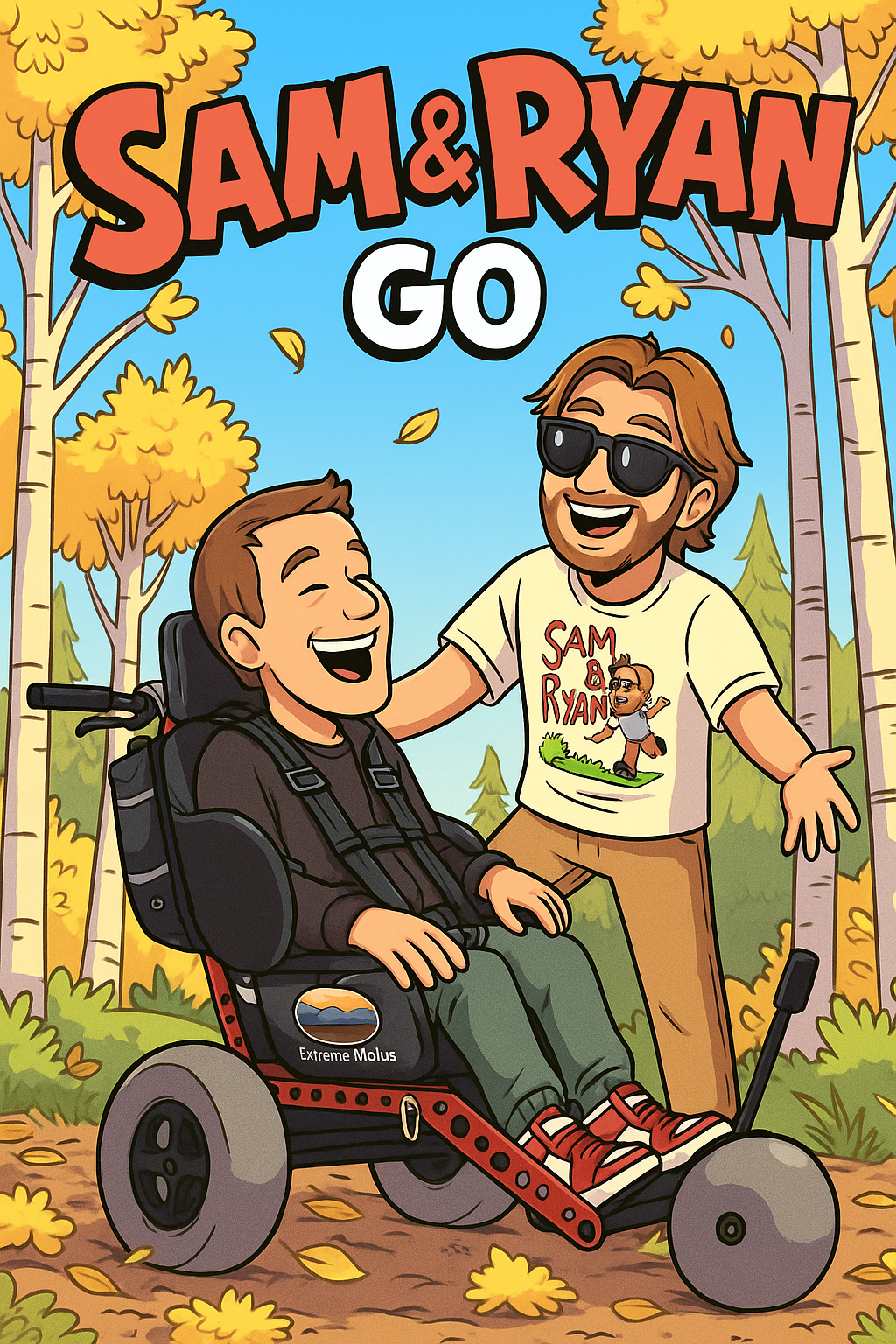How to Create an Adaptive Obstacle Course
Ready to create your own adaptive obstacle course? This article will help you pull off a memorable and fun event.
I have wanted to do some sort of race with Extreme Motus all-terrain wheelchairs for a while. Most companies organize 5Ks. But the more I thought about doing a 5k, the less I liked the idea. In a 5k all the spectators cheer for the participants at the start/finish line, and most of the race is usually on pavement. What is the point of having an all-terrain wheelchair company if you can’t go play in the grass once in a while?
A 5k didn’t seem right to me, or very fun. I wanted the special kids in this race to be cheered for and encouraged every step of the way. And the distance isn’t important, it’s the fun factor that really matters.
Together with the Pleasant Grove, UT, Recreation Center, we came up with the idea of an adaptive obstacle course. The Berserker Blitz was born. In this blog post, you will learn how we set it up and what we learned for future events.
What is an Adaptive Obstacle Course?
An adaptive obstacle course is a purpose-built version of obstacle course racing that lets people with a wide range of disabilities—wheelchair users, amputees, athletes with visual/cognitive impairments—participate safely and meaningfully. It borrows the spirit of obstacle course racing (think walls, rigs, crawls, carries) but adds things like step-free routes, wider lanes, transfer-free options, alternative tasks (“equivalents” for grip or balance obstacles), assistance-allowed rules, and flexible timing (race waves or festival style). In organized para-OCR, athletes are often grouped with simple classes (e.g., PO1–PO5) so competition stays fair.
Our adaptive obstacle course was held at Pleasant Grove’s amazing new Cook Family Park. We were able to design a course that weaved through and around the park so people could cheer and volunteers could help the participants, and they made their way from the start to the finish line. Our course was 1 mile long.
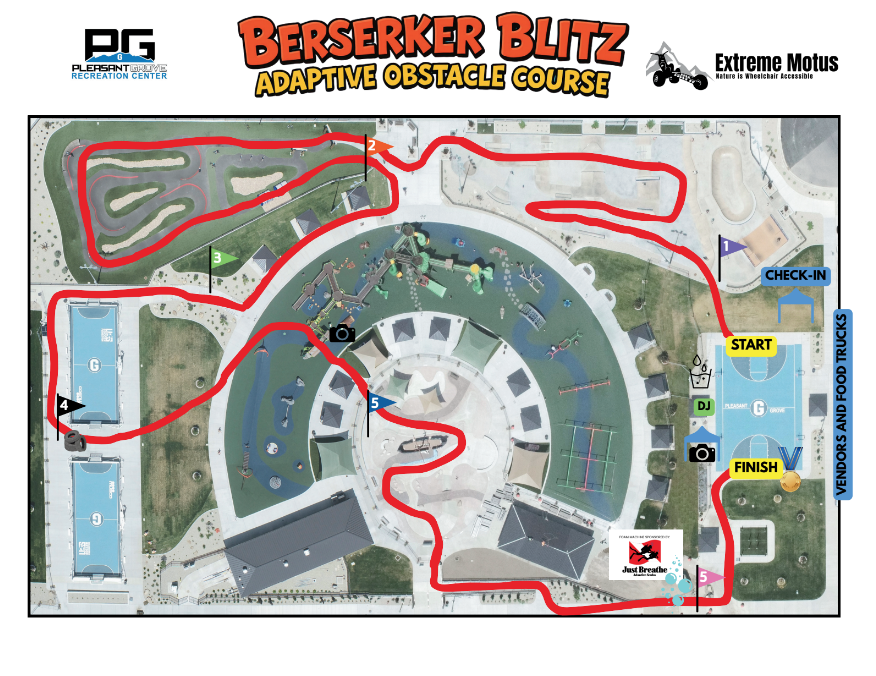
The racers took this path through the park. Leaving the basketball court, they headed straight to the skatepark and zig-zagged their way across the concrete obstacles there. Next, it was the pump track. Then, downhill to the soccer fields, where racers were met with the most difficult obstacle of the course. The tires. About 40 tires were laid out across the sidewalk. It was difficult to push the Extreme Motus All-Terrain Wheelchairs over this. Luckily, a contingent of Pleasant Grove High School football players was on standby to pick up the wheelchair and rider and carry them over the tires when they needed help. I feel the tires were too difficult and we will need to come up with something different for next the race next year.
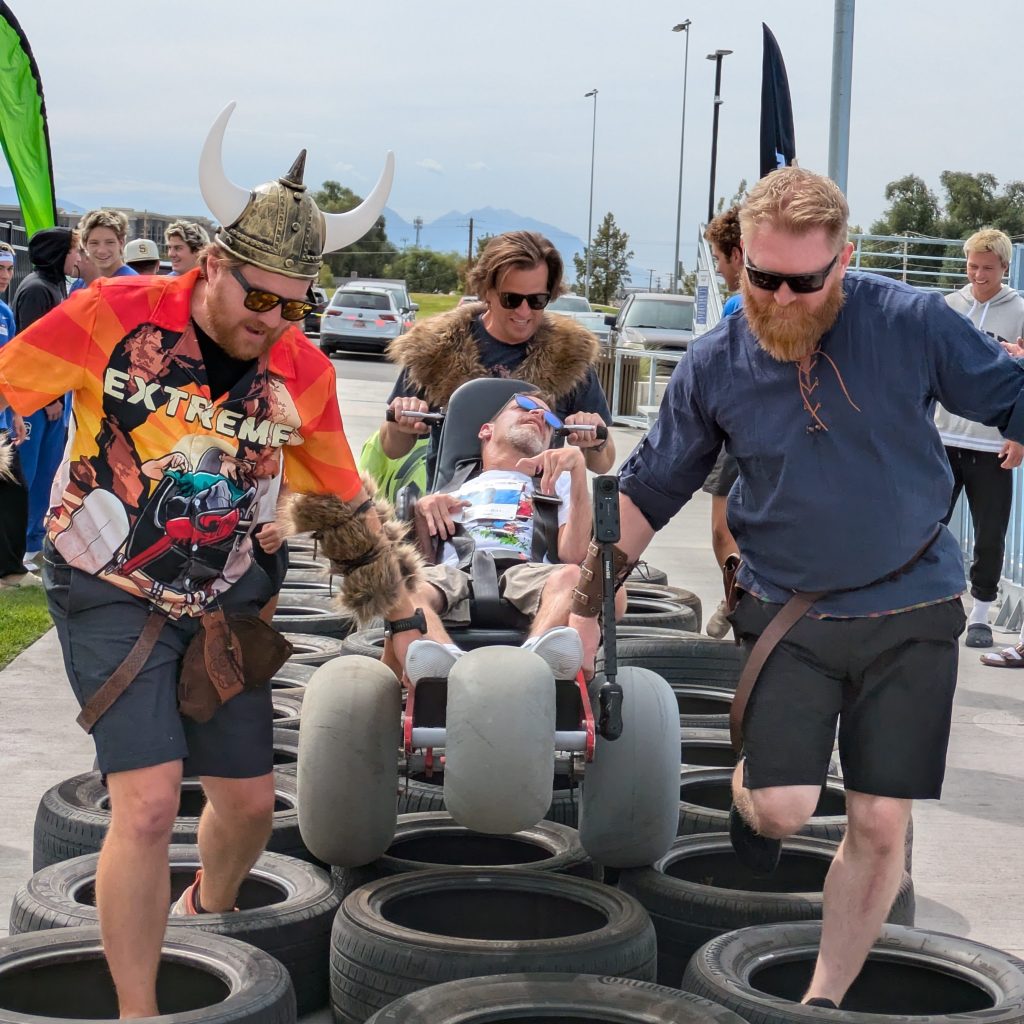
Then it was up the hill to the playground and through the splash pad. Cook Family Park has an epic splash pad with a Viking ship right in the middle. This gave racers a chance to cool off near the finish line.
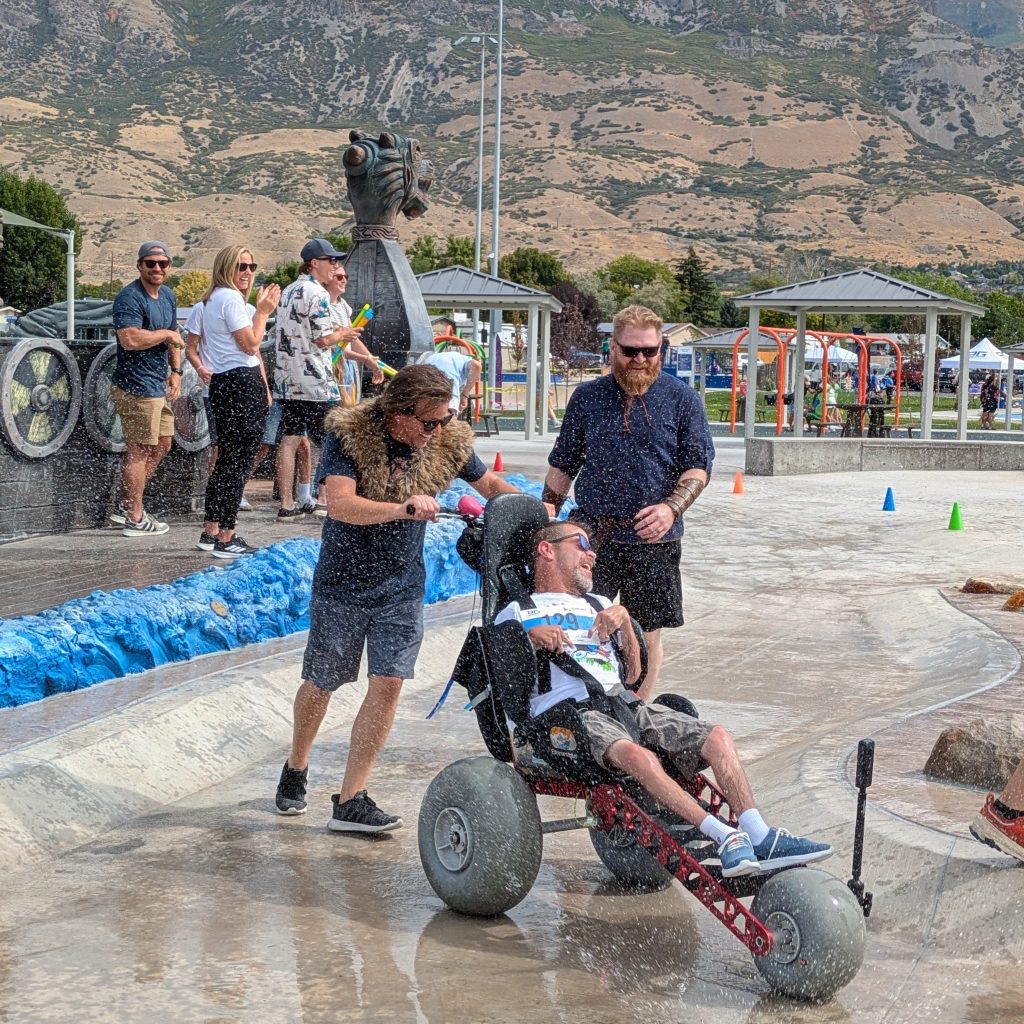
The last obstacle before the finish line was the foam cannon. Sponsored by Just Breathe Adaptive the great non-profit that Sam goes scuba diving with. Bubbles, scuba diving. You get the idea.
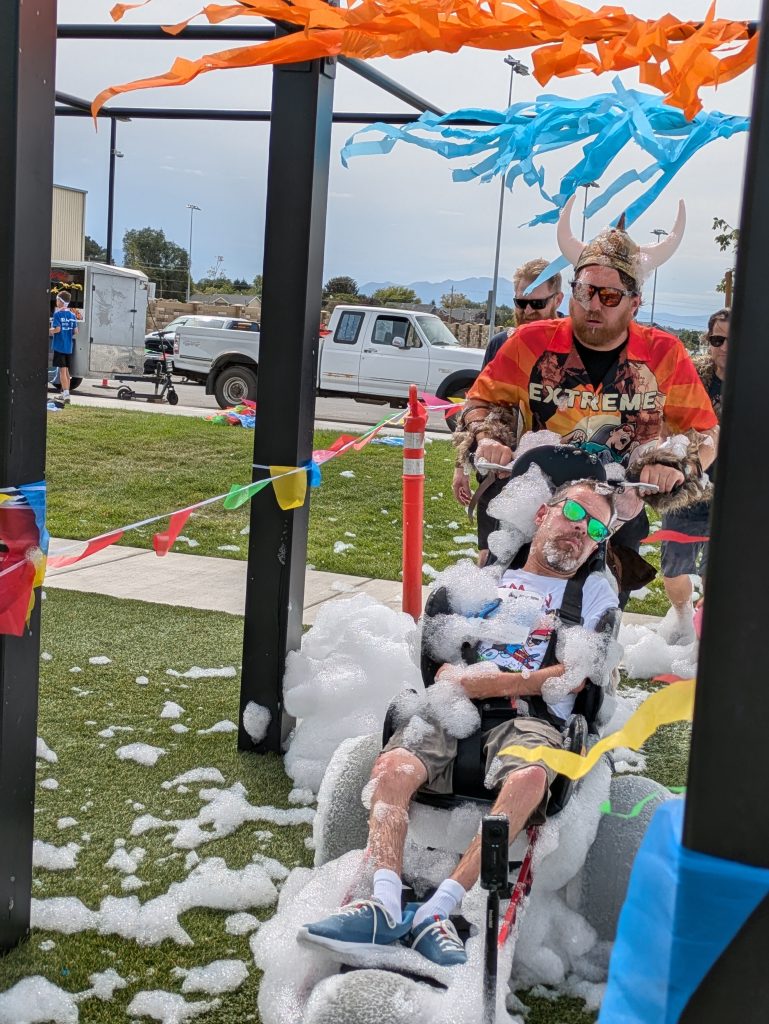
You Need Detours
Every great adaptive obstacle course needs detours—alternative routes around each challenge. These aren’t “shortcuts,” they’re invitations for everyone to participate safely and confidently, no matter their ability level or comfort zone.
In our event, every obstacle had a clearly marked detour. That meant if the person pushing the wheelchair wasn’t feeling up to tackling a muddy hill, or if the participant in the chair couldn’t get wet because of special equipment—like a ventilator, communication device, or battery-powered mobility aid—there was always an easy way around.
These detours made a huge difference. They kept the flow of the course smooth and eliminated pressure. Nobody had to explain why they were skipping something or feel like they were “missing out.” They just kept moving, smiling, and celebrating their own version of success.
After all, this event wasn’t about proving toughness—it was about creating joy. The detours reminded everyone that inclusion means flexibility. There weren’t any rules about what people had to do—just endless encouragement to do whatever made them feel awesome.
And honestly, that’s what makes adaptive obstacle courses so special: the freedom to say yes to adventure in whatever way works for you.
You Need a DJ!
If you’re hosting an adaptive obstacle course, here’s a pro tip: you need a DJ.
Music changes everything. It keeps the energy high, fills those quiet moments between heats, and turns the event from a simple race into a celebration. Our DJ rolled in with his Beat Bus—a mobile party on wheels—and instantly transformed the atmosphere. The bass was bumping, kids were dancing, and the smiles were contagious.
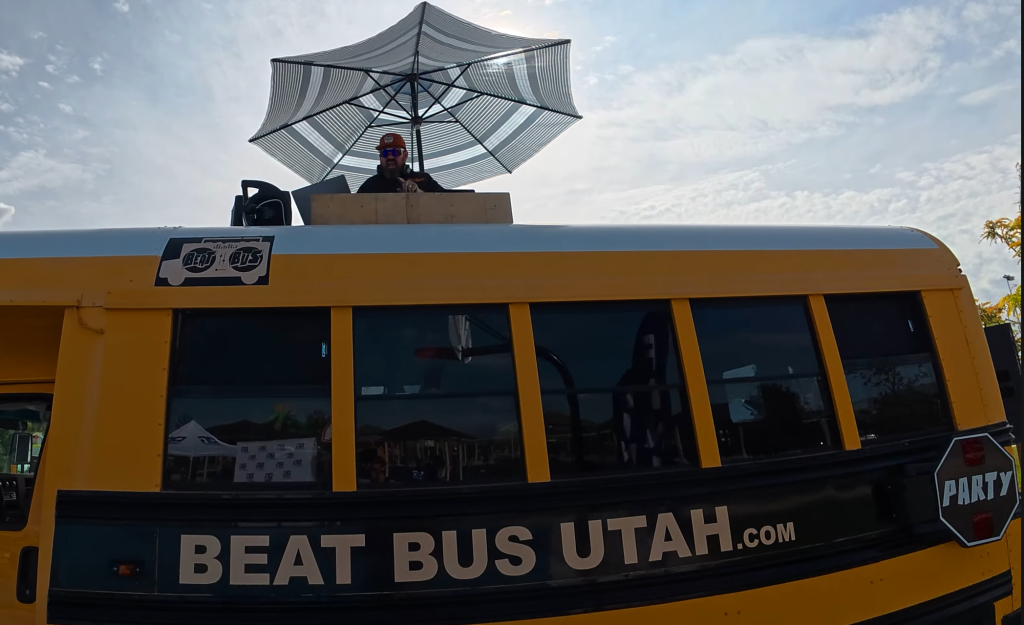
He didn’t just play songs; he became part of the event. Each participant had a race number, and we handed the DJ a list with everyone’s names. As racers rolled or ran past the start line, he’d shout them out by name—“Let’s hear it for Sam in the Motus!” or “Go, Ashley, you’ve got this!” It made every person feel like a VIP, and the crowd fed off that energy.
That’s what you want: a vibe. The DJ becomes the heartbeat of the event, turning pauses into party moments and obstacles into dance breaks. Whether someone is crossing the finish line, taking a breather, or helping a friend over a ramp, that steady beat reminds everyone why they’re there—to have fun, feel seen, and celebrate inclusion.
What adaptive equipment
The short answer? Whatever helps you move and have fun.
For our event, we had about five or six Extreme Motus all-terrain wheelchairs available for participants to use. These chairs are built for adventure—large, balloon-style tires that roll smoothly over grass, gravel, and dirt; powerful brakes for control; and a design that makes it easy for a teammate or family member to help push, pull, or steer through the course.
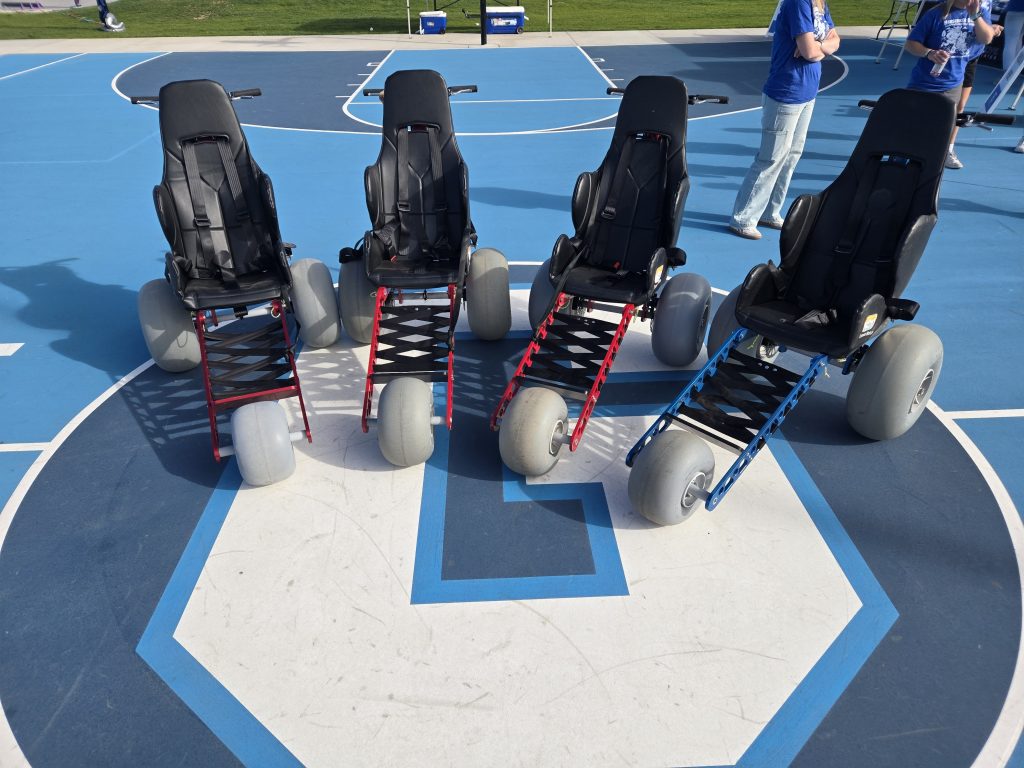
We also encouraged everyone to bring their own adaptive gear if they preferred. The result was an awesome mix of creativity and individuality—each person showing up with the setup that worked best for them. We had a GRIT Freedom Chair rolling through the mud, a Huckleberry Hiker climbing over low ramps, and even a few participants who decided to run or walk the course on foot, cheering others on as they went.
That’s the beauty of an adaptive obstacle course: it’s not about uniformity—it’s about possibility. Every piece of equipment tells its own story, and every participant uses it in a way that makes sense for them. Whether it’s a custom wheelchair, a walker, a hiking pole, or just a good pair of sneakers, the only real requirement is the desire to get out there and have fun.
You need a Photographer/videographer
Make sure you have a dedicated photo and video crew at your adaptive obstacle course. This is a high-energy, joy-filled event, and you’ll want to capture every smile, splash, and muddy victory. Having your own person behind the lens ensures that the heart of your event — the people — shines through in every shot.
Don’t stop there — invite your local news stations and community reporters. These events are full of inspiring moments that deserve to be shared far and wide. The more cameras, the better!
You Don’t Need Rules
To hell with rules!
An adaptive obstacle course isn’t about competition, time limits, or perfect technique—it’s about joy, inclusion, and creativity. The whole point is to make people feel part of something bigger, to brighten their day, and to show that adventure doesn’t have to come with boundaries.
If someone wants to crawl through the tunnel? Awesome. If another person decides to roll around it, or skip the tunnel entirely and head straight to the finish line? Even better. The “right” way to do the course is their way.
Did they skip every single obstacle? Who cares. They showed up. They laughed. They moved their body in whatever way worked for them. That’s a win.
Hand them a medal, a high five, a popsicle—whatever celebrates the fact that they participated. Because the goal here isn’t to crown the fastest competitor; it’s to make sure every person leaves feeling like a champion.
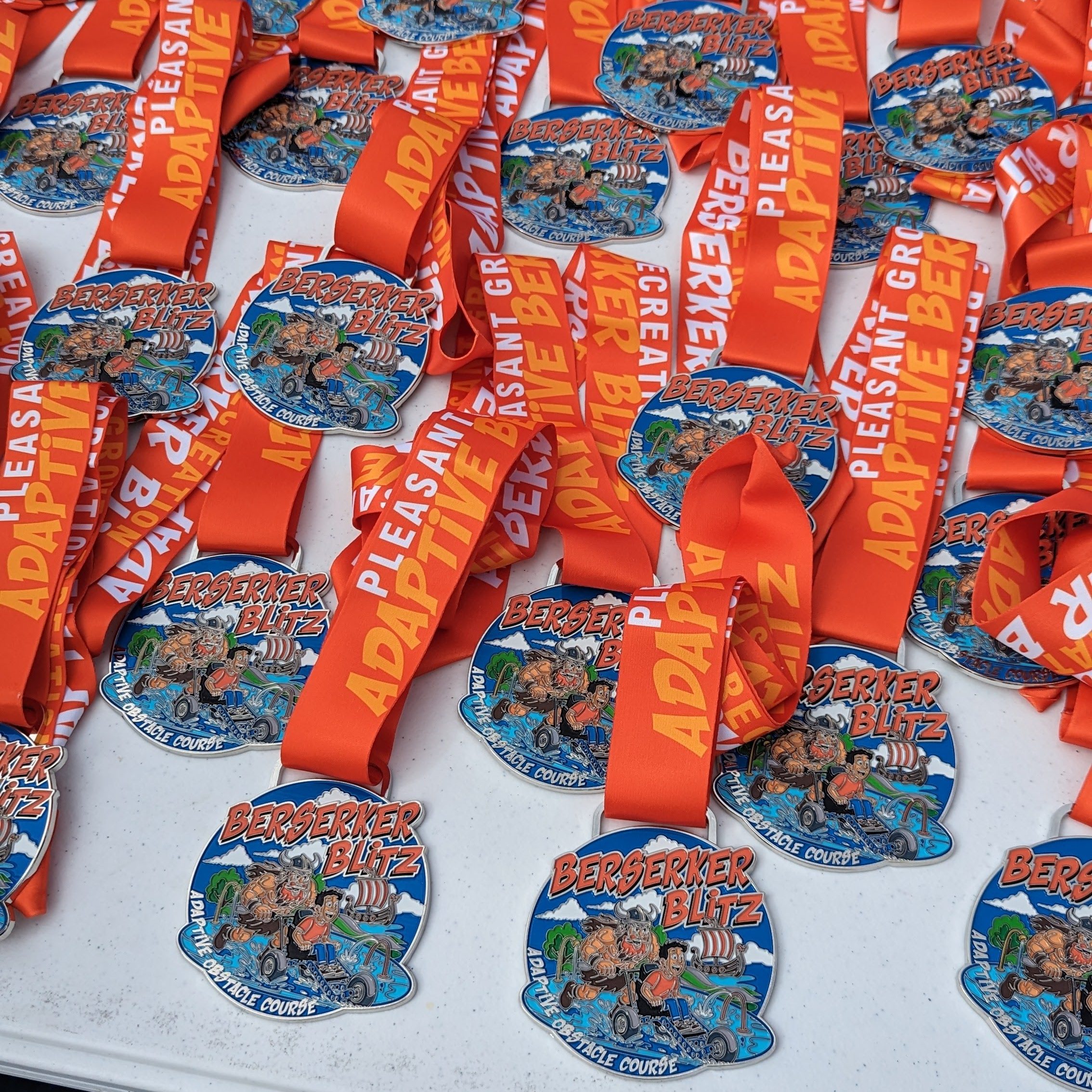
That’s what makes adaptive obstacle courses so powerful—they redefine what “winning” looks like. It’s not about beating others; it’s about beating isolation, fear, or self-doubt. It’s about proving that fun doesn’t need rules, and inclusion doesn’t need permission.
Vendors
Our adaptive obstacle course had around 15 vendors. Including some food trucks. Inviting and charging vendors for a booth at your event can help offset some of the costs. It will help pay for a t-shirt for everyone and medals for all the participants.
It will help you promote the event. It’s in each vendor’s best interest to have as many people there as possible. So they will all be sharing about this upcoming event and help you get the word out.
Volunteers
Our Berserker Blitz wouldn’t have been possible without our incredible volunteers. Dozens of people showed up early to set up the course, cheer from the sidelines, and even run alongside the participants. Their energy, encouragement, and willingness to jump in made every obstacle a little easier and every finish line a little sweeter.
From hauling wheelchairs over tires to handing out high-fives at the finish, our volunteers were the heartbeat of this adaptive obstacle course. Thank you for helping create an unforgettable day for these amazing kids and their families.
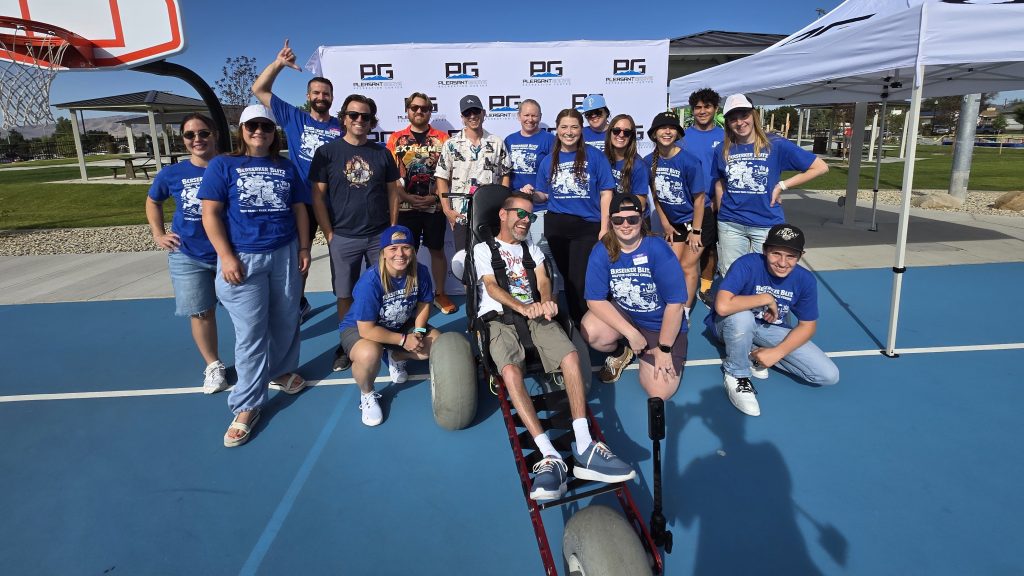
Need Help Planning?
If you need help planning or gathering equipment for your very own adaptive obstacle course, reach out to us here at Extreme Motus. The Berserker Blitz was so much fun and we are excited to see more events like this around the country.
Ryan Grassley
ryan@extrememotus.com
Every year, more families discover the freedom these chairs create—this Black Friday, demand is already building fast. By joining the early-access list, you secure your chance to order before the sale goes public on November 28, 2025.
Since 2019, Sam and Ryan have been demonstrating that nature is wheelchair accessible with the Extreme Motus All Terrain Wheelchair. From National Parks to Skateparks, their adventures prove that a manual off-road wheelchair can offer laughter and joy while navigating diverse terrains.
Join us as we continue to share these inspiring journeys.
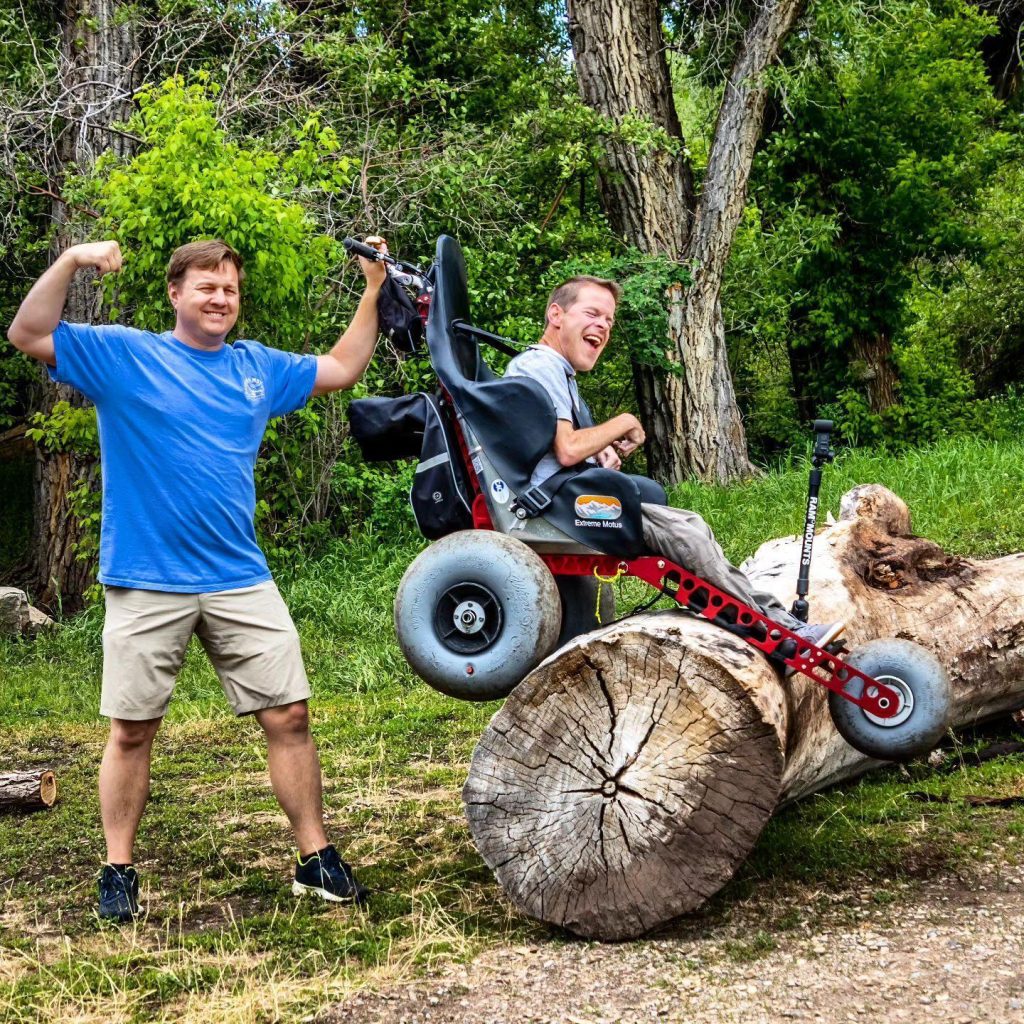
Light, comfortable, and compact, the Extreme Motus glides over sand, rocks, grass, gravel, and even floats in water.
It’s more than a outdoor wheelchair; it’s your ticket to freedom. Embrace the outdoors with confidence, knowing our off-road wheelchair is engineered for durability and ease of use.
Be the first to hear about new gear, upcoming adventures, and exclusive offers. As a welcome gift, enjoy $10 off your first Motus T-Shirt when you subscribe.
By subscribing you agree to receive marketing communications from Extreme Motus, including product updates, promotions, and special offers. I understand I can unsubscribe at any time.

